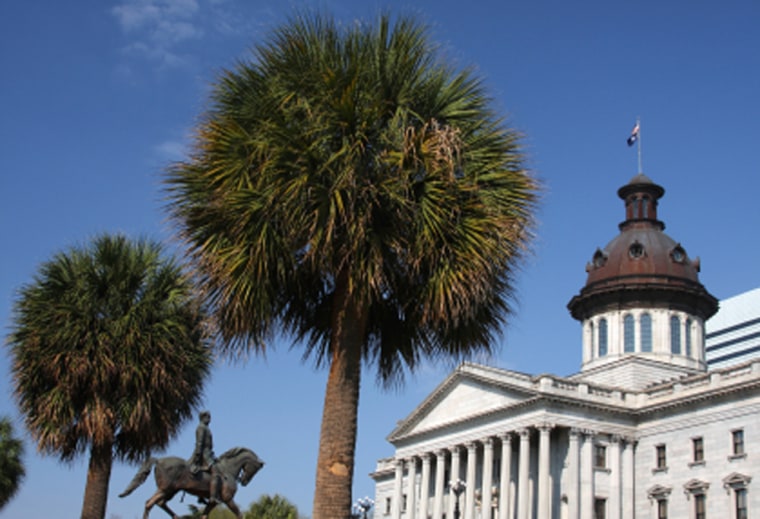Americans are moving to college towns and job-growth centers, not the big cities.
Detroit may be under siege by high crime, a lousy climate and the decimation of the auto industry, but one other U.S. metro is less desirable for relocation than the Motor City: New York.
The two metro areas are the least moved-to of any in the country. Residents that moved to those cities last year account for only 1.5 percent and 1.1 percent of the population, respectively, according to the U.S. Census Bureau's American Community Survey, released last week.
Much more attractive, however, are college towns where students and education professionals help welcome outsiders. Among the places in America that have welcomed the most newcomers in 2008, three are home to major colleges and universities: Raleigh, N.C., Provo, Utah, (home to Brigham Young University, one of the country's largest private colleges), and Austin, Texas, home to the University of Texas at Austin.
"If there are lots of newcomers, it's easy to make friends; there's a sense of vibrancy there," says William Frey, a senior fellow at the Brookings Institution. "Places that don't have a lot of new migrants tend to be older and more stagnant. They're also more close-knit.
Intellectual centers like the above-mentioned college towns, however, reliably attract new residents because universities are large, relatively stable employers — and a steady flow of students keeps the population young.
"You have an educated population, and you have a large youthful population," says Alexander von Hoffman, senior fellow at the Joint Center for Housing Studies at Harvard University. "These places retain people after they've graduated, and attract like-minded people."
Behind the numbers
The U.S. Census Bureau's American Community Survey updates select subjects from the decennial U.S. Census annually, using a smaller sample of the population. It measures characteristics of the population for the year 2008. Forbes looked at the percentage of residents, one year or older, that moved into the 100 most populous Metropolitan Statistical Areas (geographic entities that the U.S. Office of Management and Budget defines and uses in collecting statistics).
Florida metros Cape Coral, Lakeland, Palm Bay and Bradenton saw some of the highest percentages of incoming residents in the country last year. But Florida's population trends are more complex than these numbers can show. Seen over time, Florida's is a story of population drain, not gain. After a boom that began in the '70s, Florida growth slowed considerably.
"In the 1970s, Florida had a population growth of 3 percent or 4 percent a year. Bodies kept pouring into the state," says Sean Snaith, director of the Institute for Economic Competitiveness at the University of Central Florida. "I called it economic development for dummies: Let them come in and sit back and watch the economy grow."
But, he says, as older Americans have put off retirement, the cost of living has grown and the economy and job market have deflated, the state's growth is finally slowing down. Because these numbers only reflect the past year, they don't illustrate long-term trends. But they do show that Florida's appeal remains strong.
"Newcomers there are still a substantial part of the population," says Frey.
Industry and population
As a general rule, where there are growth industries, newcomers arrive in a steady stream. The military and high-tech industries beckon workers in Colorado Springs, Colo., which is the area with the highest rate of new arrivals in the country. Education and health care jobs are prevalent there as well, which keep people coming. In Bakersfield, Calif., third on our list, it's the oil-based economy that constantly brings in newcomers.
Conversely, formerly thriving manufacturing centers in the Midwest and nearby regions have seen dismal immigration in recent years; 2008 was no exception. Milwaukee, Wis.Youngstown, Ohio, St. Louis, Buffalo, N.Y., Minneapolis and Detroit all ranked near the bottom of the list for new immigrants.
Big cities also struggle to attract newcomers due to the high cost of living. As with previous years, New York, Los Angeles and Chicago had the lowest percentages of new residents in the country.
Ironically, however, the pummeled economies in these cities made it difficult for many to move. Thus, in 2008 net migration — the number of those that migrate in minus those who leave — was a slimmer margin than in recent years, according to Frey. For the time being, that's a plus for New York's economy. But locals are likely to move out in greater numbers when the economy rebounds.
While it's safe to say today that big cities are relatively stable and Florida's seeing fewer new arrivals than in the past, populations are always shifting. It's all but certain that that the tides will change again.
"All communities, and urban ones in particular, are in a state of population flux all the time," says Hoffman. "Americans, historically and recently, are always on the move."
